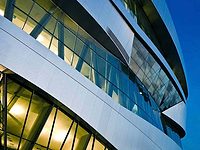What PCB Coating Should I Choose for My Boards?

Photo: Isti2, iStock/Getty Images Plus, via Getty Images
Printed circuit board (PCB) production typically involves applying a coating to protect the component from aspects that could otherwise hinder its performance and shorten its life span. Understanding the most appropriate one to choose starts with knowing the types of PCB coatings. However, there are also other factors to consider that will influence the outcome. Here’s what you need to know.
Evaluate the Biggest Threats to Your PCB
People apply coatings to PCBs and get numerous advantages. The right ones can safeguard delicate parts from corrosion and other environmental dangers. Plus, since many of these coatings have insulating properties, designers can make their boards with the conductors closer together without noticing performance degradation. Many PCB specialists use thin and flexible substrates to achieve the progressively greater miniaturization required for many of today’s devices. That’s important, but PCB coating options can support smaller designs, too.
One of the primary things to consider when choosing between the types of PCB coatings is what potential dangers the printed circuit board will most likely encounter during use. Silicone coatings offer chemical and moisture resistance and can tolerate high temperatures. Urethane and epoxy coatings safeguard boards against abrasion. Although acrylic coatings generally adhere well to various substrates, they don’t protect PCBs well against moisture.
A good starting point for coating selection is to consider whether the PCBs will go in devices mostly or solely used indoors or out. Answering that question will help narrow down the most likely types of environmental exposure.
It’s also useful to evaluate whether any specific requirements are associated with the industry that will use the PCB. Many printed circuit boards in the medical sector require biocompatible coatings and must tolerate regular exposure to bodily fluids.
Professionals in the oil and gas industry often use connected devices containing PCBs to monitor equipment in isolated areas. In those cases, users want to feel confident that the products will keep working reliably. A PCB coating is not the only aspect that ensures the expected performance, but it influences whether the item functions as expected, despite harsh conditions.
Apply Your PCB Coating Correctly
Some people mistakenly think it’s always better to overapply PCB coatings rather than not use enough. However, it’s critical to use them as directed by the manufacturer to get the best results. Using too much could cause issues such as bubbling and cracking. Sometimes, overapplication can cause a problem called capillary flow, where the coating moves from the initial application area to another part, causing an uneven surface finish.
In contrast, when people don’t apply the coating thoroughly, it likely won’t provide the expected benefits. Generally, conformal coatings need a thickness of 3-8 mils to work correctly. Instruments such as current gauges and micrometers help people verify that the PCB has the correct coating thickness after application.
People can evaluate various application methods. However, some of them only work with certain board types. For example, dipping is a fast and accurate option. However, the board must have a leakproof design. Applying PCB coating with a brush is a manual method, so it’s typically only appropriate for people working with a small number of boards who don’t have other options available.
People can also use an aerosol sprayer to add PCB coatings. It’s a cost-effective method, but one that requires a lot of preparation due to the need to mask all the areas of the board not requiring the coating.
Finally, it is increasingly common for people to coat their boards with parylene. It offers robust protection against chemicals, corrosion, temperature extremes and more. However, a potential downside is that people can only apply parylene with specialized vacuum deposition equipment. That means manufacturers will likely need to make significant investments before using this method, and they should make a careful cost-benefit analysis before proceeding.
Consider Adding Automation When Applying the Types of PCB Coatings
PCBs are in high demand, and people continually look for reliable ways to produce them faster. One option is to make them with a 3D printer, which has a lower per-unit cost than conventional manufacturing. It’s also highly efficient and great for prototyping.
People can also depend on robots when applying the types of conformal coatings they deem most suitable, as long as the board design supports that approach. They’ll use a selective coating machine, which is a robotic piece of equipment programmed to dispense material in certain patterns consisting of dots or stripes.
PCB designers must categorize all the areas of their boards that must or must not get coated by the robot, as well as parts that can either have the PCB coating applied or not without affecting the board’s functionality. Also, there should be at least 2.5 millimeters between the parts that must and must not get coated. That’s because it’s not always possible to stop the liquid from reaching the restricted areas when there’s insufficient distance.
Another helpful design tip is to put all board components of similar heights within the same assembly area. Doing that allows the robotic equipment to run with maximum efficiency while giving the best coating coverage.
Realize That Insufficient Cleanliness Affects All Types of PCB Coatings
Even once people have gotten to the point of selecting the most appropriate PCB coatings for their projects, they can’t necessarily rest assured it’ll perform to their expectations. That’s because the PCB surface must be sufficiently clean for any coating to properly adhere to it and display the stated protection characteristics after application.
Fingerprint oils, adhesive residue and chip bonders are some of the most common contaminants that could negatively affect the application and longevity of a coating. Some of them, such as flux residue, can also soak up and hold moisture.
That issue introduces a new complication since wetness may cause the conformal coating to crack as it cures. Water, dust and salt are examples of contaminants that can more easily penetrate down to the board’s substrate than others. They can cause problems ranging from delamination to dendrite growth.
The complete cleaning process before applying PCB coatings involves wetting, scrubbing, rinsing and drying. When the board is particularly small or complex, one of the most widely used solutions is a vapor degreaser. It thoroughly removes all contaminants, and the process can be automated.
Each PCB Coating Has Pros and Cons to Consider
The tips here will help people differentiate between the different kinds of PCB coatings and make better decisions about which ones to use. Besides offering protection against certain threats, these coatings have varying cure times that affect overall production timelines.
However, taking the time to understand the types of PCB coatings will help people steer clear of pitfalls. Choosing the wrong option could lead to eventual performance degradation, not to mention wasted labor and money. Selecting the most appropriate option is one of the most practical ways to help the board perform as expected. This benefit, in turn, supports a manufacturer’s reputation and turns customers into repeat purchasers.Looking for a reprint of this article?
From high-res PDFs to custom plaques, order your copy today!







